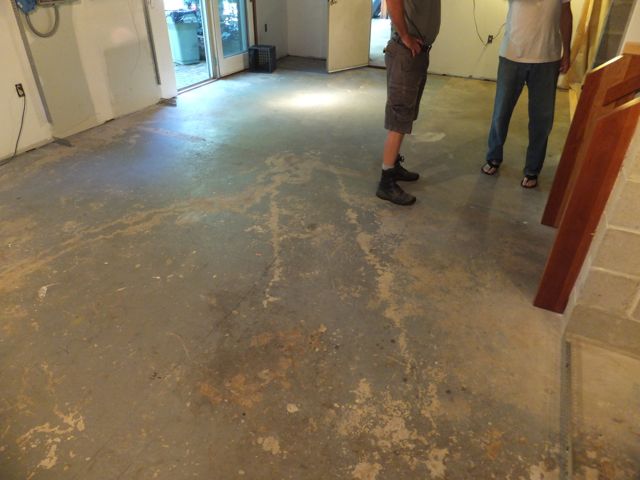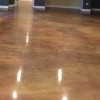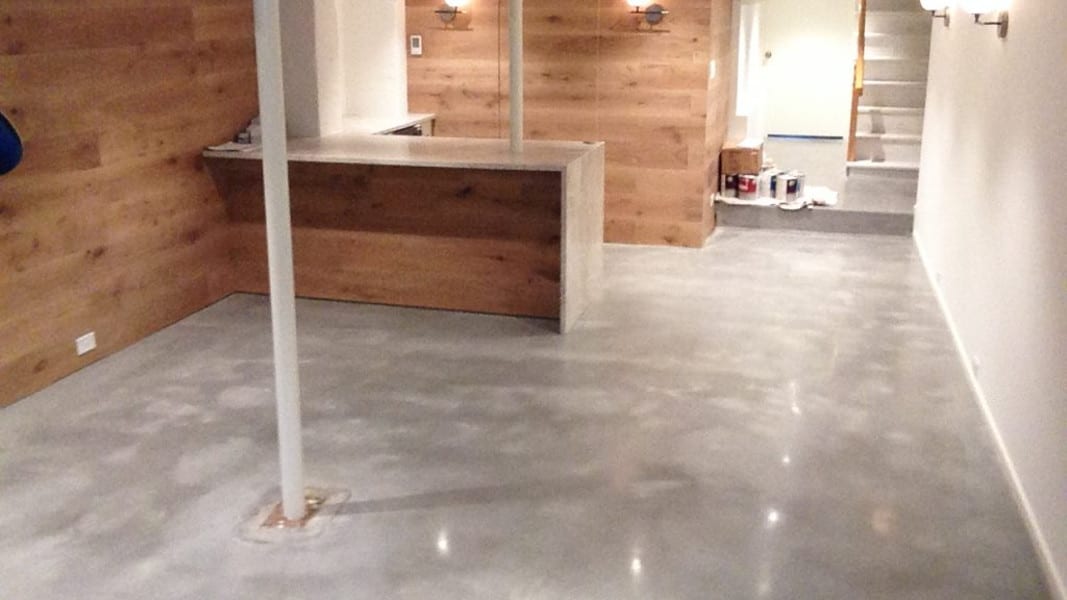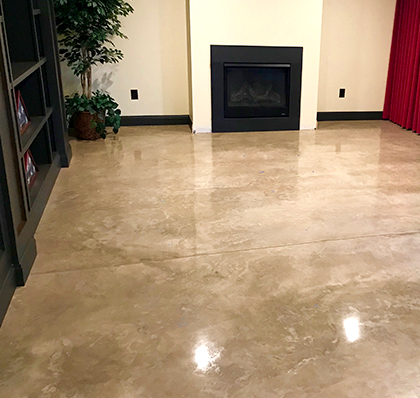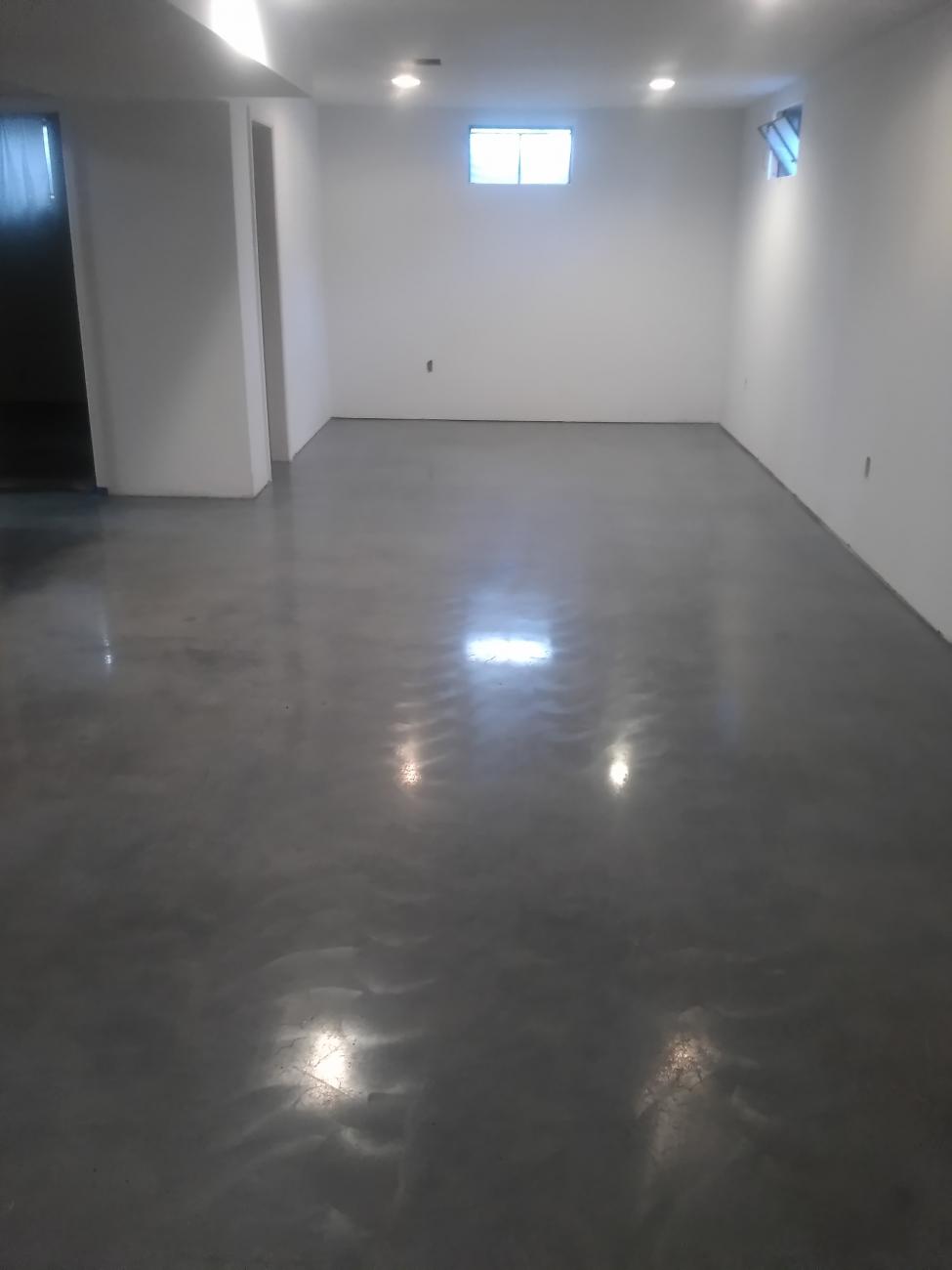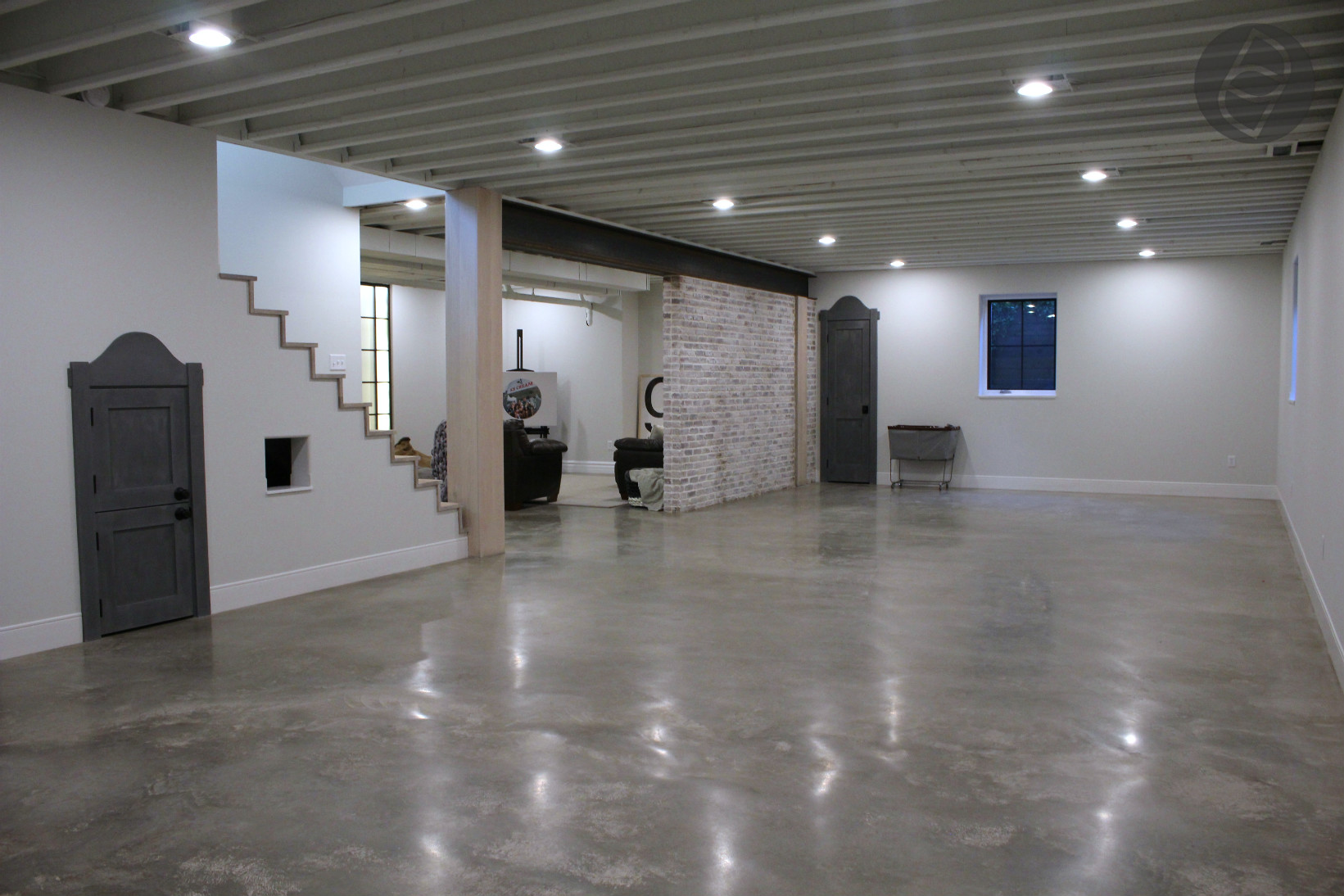Preparing the Concrete Surface for Polishing
Before you start the process of polishing your concrete basement floor, it is important to properly prepare the surface. This will ensure that the finished result is smooth, even, and long-lasting. Here are the steps to follow when preparing the concrete surface for polishing:
- Clean the floor: Start by thoroughly cleaning the concrete floor. Remove any loose debris, dust, or dirt using a broom or vacuum cleaner. For stubborn stains or residues, you may need to use a mild detergent and scrub brush to remove them. It is crucial to have a clean surface to achieve the best polishing results.
- Repair any cracks or damages: Inspect the concrete floor for any cracks, chips, or other damages. These imperfections should be repaired before you proceed with the polishing process. Use a concrete repair product to fill in the cracks and smooth out any rough areas. Allow the repaired areas to fully cure before continuing.
- Grind the surface: To achieve a smooth and even surface, you will need to grind away any existing coatings, adhesives, or rough patches. Use a concrete grinder with diamond grinding pads to remove these imperfections, ensuring that you cover the entire floor evenly. This step will also open up the pores of the concrete, allowing for better penetration of the polishing materials.
- Level the floor: Depending on the condition of your concrete basement floor, you may need to level it before polishing. Uneven areas can be leveled using self-leveling compounds or by grinding down high spots. A level floor will ensure that the polishing process yields consistent results across the entire surface.
- Densify the concrete: Applying a concrete densifier will help strengthen and harden the surface, making it more resistant to abrasion and wear. This step is important for achieving a durable and long-lasting polished concrete floor. Follow the manufacturer’s instructions for the application of the densifier, ensuring even coverage.
- Clean and prepare for polishing: After the surface has been densified, thoroughly clean the floor to remove any dust or debris. This can be done using a wet mop or a specialized concrete cleaner. Allow the floor to dry completely before proceeding with the polishing process.
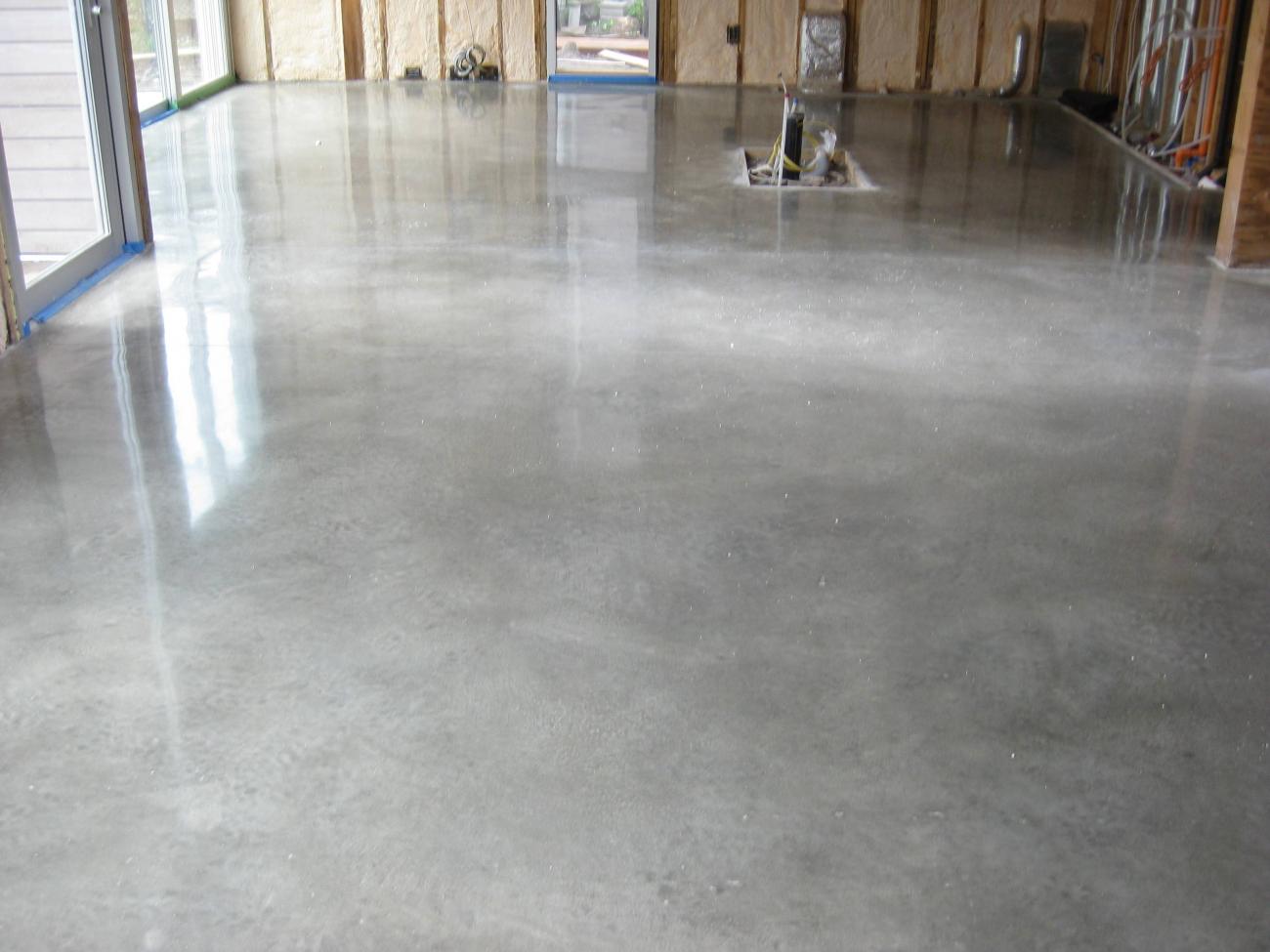
Steps to Polish Concrete Basement Floors
Polishing concrete basement floors can be a great way to give your basement a clean and modern look. Not only does it improve the aesthetics of the space, but it also provides a smooth and durable surface. Here are the steps to polish concrete basement floors:
- Preparation: Before you begin polishing, you need to prepare the concrete surface. Start by removing any existing floor coverings or adhesives. Use a scraper or grinder to get rid of any uneven patches or bumps. Thoroughly clean the floor to remove any dust, dirt, or grease.
- Repair and Fill: Inspect the concrete for any cracks or holes. Repair them using a concrete patching compound. Make sure to fill in any gaps or depressions to ensure a level surface.
- Grinding: The next step is to grind the concrete surface using a diamond grinder. Start with a coarse-grit diamond pad and gradually work your way up to finer grits. This process helps remove any imperfections, stains, or coatings on the surface. It also opens up the pores of the concrete, allowing for better polish penetration.
- Polishing: Once the grinding is complete, it’s time to polish the concrete. Begin with a lower grit diamond pad and slowly progress to higher grits. This process smoothens the surface and enhances its shine. Make sure to evenly cover the entire floor to achieve a consistent finish.
- Densifying: To increase the durability and strength of the polished concrete, apply a concrete densifier. This chemical treatment fills in the pores of the concrete, making it more resistant to stains and wear. Follow the manufacturer’s instructions for proper application and drying time.
- Staining or Coloring (optional): If you want to add color or enhance the appearance of the concrete, you can apply a stain or dye. Choose a product that is specifically designed for concrete and follow the instructions for application and curing.
- Sealing: The final step is to seal the polished concrete basement floor. A concrete sealer helps protect the surface from stains, spills, and moisture. It also enhances the shine and adds a glossy finish. Apply the sealer according to the manufacturer’s instructions and allow sufficient drying time.
Choosing the Right Polishing Method for Your Basement Floor
When it comes to polishing your concrete basement floor, it is important to choose the right method that suits your specific needs. The polishing method you choose will depend on factors such as the condition of your floor, the desired level of shine, and your budget. Here are some popular polishing methods to consider:
Dry Polishing:
Dry polishing is a popular method for basement floors as it does not require the use of water or any liquid chemicals. This method involves using diamond abrasives to grind the floor surface, resulting in a polished finish. Dry polishing is a cost-effective option and is suitable for floors that are in relatively good condition.
Wet Polishing:
Wet polishing involves the use of water and liquid chemicals to achieve a polished finish. This method is preferred for basement floors that require a higher level of shine and for floors that have significant damage or imperfections. The water helps to cool the diamond abrasives and prevent dust from becoming airborne. Wet polishing may be more expensive than dry polishing due to the additional materials required.
Hybrid Polishing:
Hybrid polishing combines both dry and wet polishing methods to achieve a balance between cost and shine. This method involves initially dry polishing the floor to remove any imperfections, followed by wet polishing to enhance the shine. Hybrid polishing is suitable for basement floors that require a moderate level of shine and have minor imperfections.
Honed Polishing:
Honed polishing is a popular choice for basement floors that do not require a high level of shine. This method involves grinding the floor surface with coarse diamond abrasives to create a smooth, matte finish. Honed polishing is a cost-effective option and is commonly used for basement floors that will be covered with a floor coating or carpet.
Stained Polishing:
If you want to add color and depth to your basement floor, stained polishing is a great option. This method involves applying a stain or dye to the concrete surface before polishing. The stain penetrates the concrete, creating a beautiful, marbled effect. Stained polishing is ideal for basement floors that you want to showcase as a design feature.
Concrete Flooring Contractor Algonquin, Arlington Heights
Polished Concrete Basement – Treadwell
CustomCrete Polished Concrete in St. Louis, MO
Polishing 5280 Floors
Modern at Play – Dancer Concrete Commercial Polished Concrete
Related Posts:
- Basement Floor Insulation Methods
- Concrete Flooring Options For Basement
- Sill Gasket For Basement Floor
- Vinyl Flooring In Basement Pros And Cons
- How Thick Are Basement Floors
- Thermal Break Basement Floor
- Interlocking Rubber Floor Tiles For Basement
- Remove Water From Basement Floor
- Types Of Basement Floor Drains
- Basement Floor Cement Sealer

